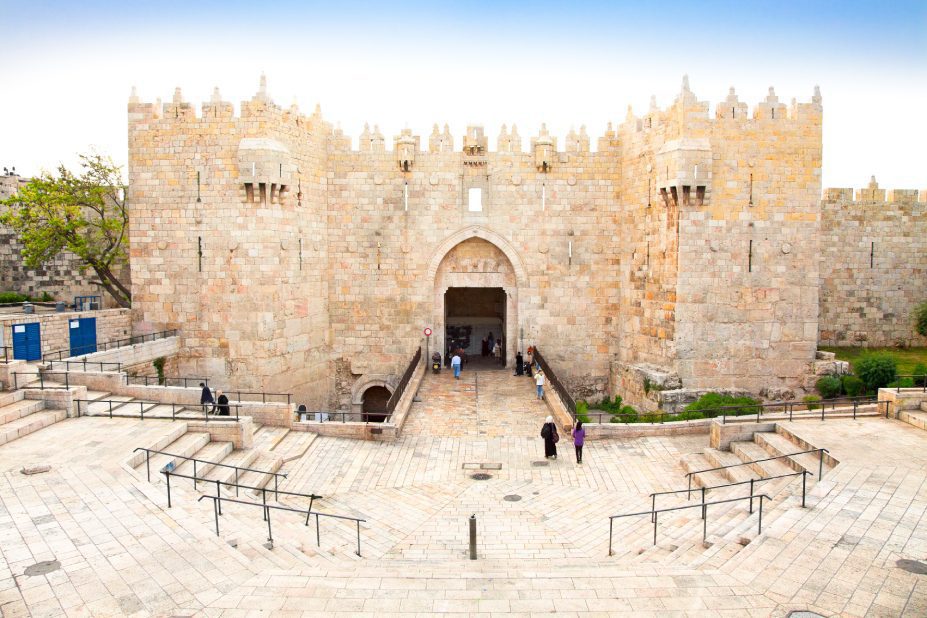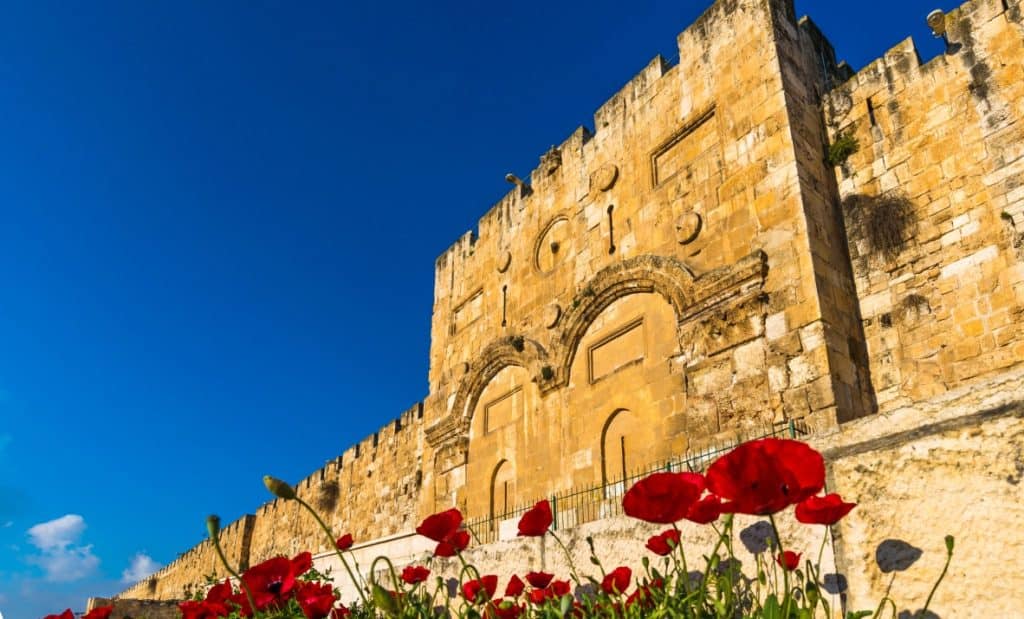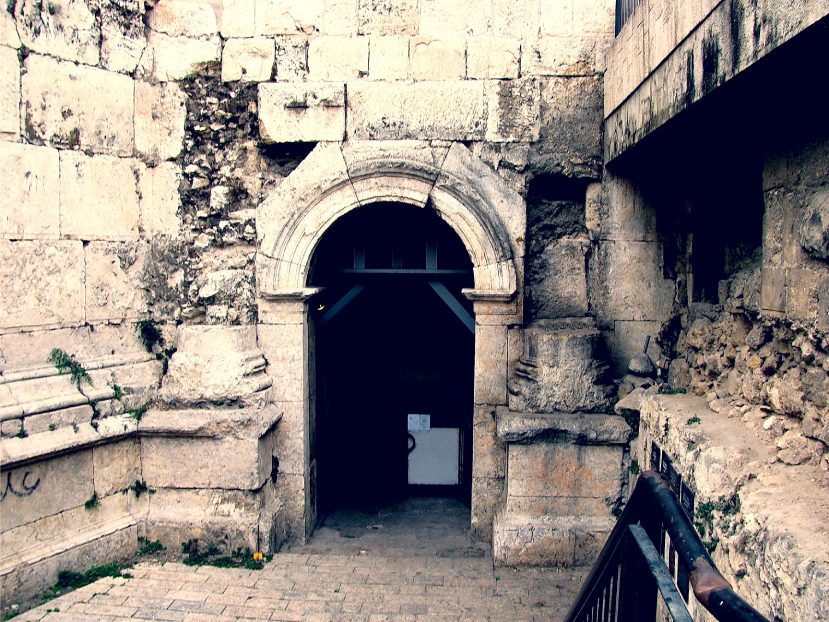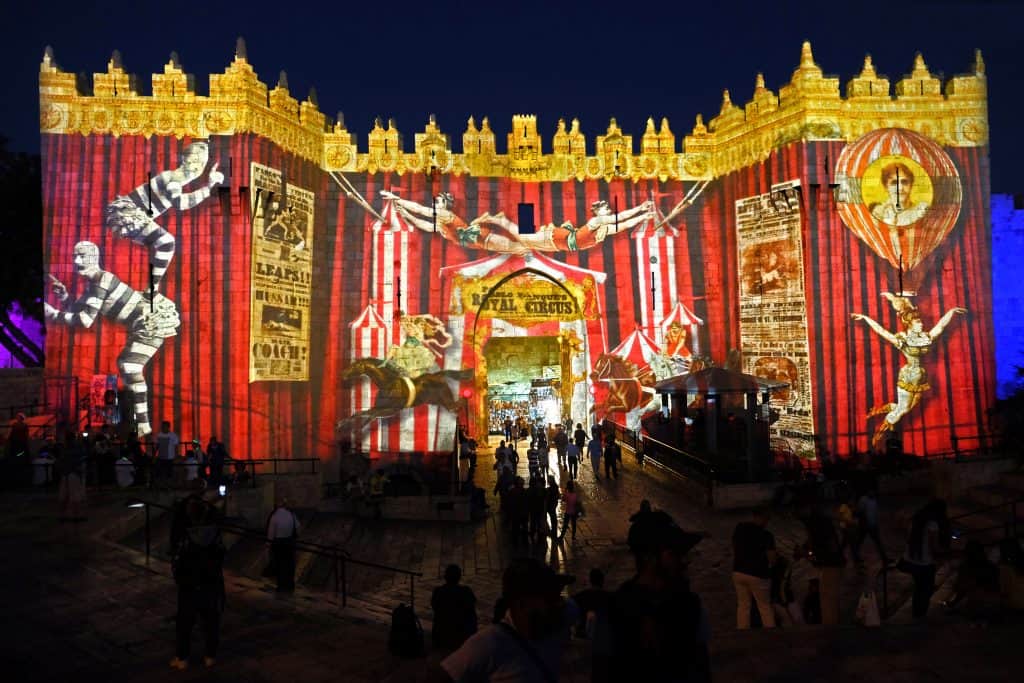Damascus Gate is one of the main Gates of the Old City of Jerusalem. It is located in the wall on the city’s northwest side and connects to a highway leading out to Nablus, which in the Hebrew Bible was called Shechem. And from there, in times past, to the capital of Syria, Damascus. So as a result in modern English the name is Damascus Gate. The Name in Arabic is Bab al-Amud which means “gate of the column.” The name, in use continuously since at least as early as the 10th century, preserves the memory of a Roman column towering over the square behind the gate and dating to the 2nd century CE.
The History of the Damascus Gate
Damascus Gate in its current form, the gate was built in 1537 CE under the rule of Suleiman the Magnificent. Beneath the current gate; the remains of an earlier gate can be seen; dating back to the time of the Roman Emperor Hadrian; who visited the region in 130–131 CE. In the square behind this gate stood a Roman victory column topped by a statue of Emperor Hadrian, as depicted on the 6th-century Madaba Map.

This historical detail is preserved in the current gate’s Arabic name, Bab el-Amud, meaning “gate of the column.” On the lintel of the 2nd-century gate, which has been made visible by archaeologists beneath today’s Ottoman gate, is inscribed the city’s Roman name after 130 CE, Aelia Capitolina.
Gates of the Old City of Jerusalem

Until the latest excavations (1979-1984); some researchers believed Hadrian’s gate was preceded by one erected by Agrippa I (r. 41–44 CE) as part of the so-called Third Wall. However, recent research proves that the gate does not predate the Roman reconstruction of the city as Aelia Capitolina; during the first half of the second century.

Hadrian’s Roman gate was built as a free-standing triumphal gate. Only sometime towards the end of the 3rd or the very beginning of the 4th century were protective walls built around Jerusalem; connecting to the existing gate.

On my private tours of the Old City, I take my guests to see the Damascus Gate. Indeed the Gate is super impressive. My recommendation is to pass through there if you have the chance.







